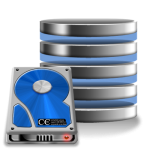
RStor: How To
By Ross Madden
Published on August 13, 2018 9:34 am MT Updated on August 2, 2022 9:23 am MT Posted in General CNSIT, Internet & Networking, Knowledge Base, The Cloud, Tips and Tricks
This article is designed to help you connect to an RStor network share. If you are unsure of what an RStor share is, check out the following article and let us know if you still have questions: https://cnsit.colostate.edu/kb/rstor-has-arrived
Off Campus?
If you are off campus, be sure to first connect to the CSU VPN client. https://cnsit.colostate.edu/kb/csu-vpn-duo
Connecting to RStor
Now that you have a new RStor network share, how do you connect to it? At its core RStor is just a network share, where users with the proper access can connect, and collaborate in a common data store. After you request access to RStor through CNSIT, you will be given a Share Name, this is the variable used to identify the correct path when connection. Below are syntax examples for Windows and MacOS:
Windows – Explorer->”Map Network Drive” syntax (https://cnsit.colostate.edu/kb/mapping-a-network-drive)
\\campusrstor1.onefs.colostate.edu\natsci\YOUR_SHARE_NAME
MacOS – Finder->”Connect to Server” syntax
smb://campusrstor1.onefs.colostate.edu/natsci/YOUR_SHARE_NAME
Authentication
RStor requires a valid CSU NetID account to use. Depending on whether your machine is domain connected, you may need to specify the COLOSTATE domain before your NetID while authenticating as shown below:
COLOSTATE\NetID
Managing RStor
To update details of your RStor share, you will most likely have to contact CNSIT by submitting a ticket: https://cnsit.colostate.edu/help
This includes the following:
- Adding/Removing access to members (DIY Guide: https://cnsit.colostate.edu/kb/manage-rstor-group-access-with-grouper)
- Increasing/Decreasing your storage quota (Increases may occur at any time. Decreases may occur annually.)
- Modifying the account code used for charges (“53” accounts cannot be used for RStor, unless the associated project explicitly states this is allowed.)
